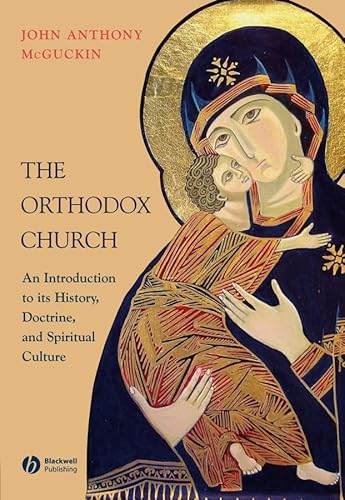The Orthodox Church of the East, a venerable body within Christianity, has captivated the hearts and minds of countless individuals across centuries. Enshrined in rich tradition and theological profundity, the Orthodox faith offers a unique perspective on the unfolding narrative of Christian history. It stands as a living testament to the continuity of faith, a harbor of ancient beliefs in a modern, often fragmented world. Understanding its history, doctrine, and global reach unveils layers of fascination and reverence that lie just beneath the surface.
The Orthodox Church traces its roots back to the earliest days of Christianity, crystallizing its doctrines through the ecumenical councils that defined the theological landscape of the early Church. The Great Schism of 1054 marked a pivotal point in Christian history, severing the communion between the Eastern Orthodox and Roman Catholic Churches. This schism was not only a culmination of theological disputes, such as the procession of the Holy Spirit and the nature of the Eucharist, but also reflected deeper cultural, political, and ecclesiastical divisions. The Orthodox Church, characterized by its rich liturgical traditions and Byzantine heritage, flourished in the east, deeply enmeshed within the socio-political tapestry of empires and nations.
According to Orthodox doctrine, salvation is a synergistic process, integrating divine grace with human freedom. This understanding manifests in the concept of theosis, or deification, where believers aspire to become one with God through a transformative journey grounded in grace and virtue. This theological framework enthralls many, as it accentuates an intimate and relational understanding of God—one that invites believers to partake actively in their own spiritual transformation. The sacraments, central to Orthodoxy, are essential vehicles through which this divine grace flows. The sacramental life, with the Eucharist at its apex, is more than mere ritual; it is the very heartbeat of Orthodox spirituality.
The unique character of Orthodox worship sets it apart. Liturgy is a profound expression of faith, encompassing music, art, and ceremonial practices that transcend the written word. Icons, revered not merely as religious art, are considered windows to the divine, serving as conduits for prayer and contemplation. The tactile experience of worship—incense filling the air, the sound of chanting, the visual splendor of iconography—immerses the faithful in a sensory experience that engenders a profound connection to the divine narrative. It invites both an aesthetic appreciation and a deep spiritual engagement, making the Orthodox worship experience an entrancing facet of the faith.
Globally, the Orthodox Church represents a mosaic of cultures, encompassing diverse languages, traditions, and histories. The most prominent branches include the Greek Orthodox Church, the Russian Orthodox Church, and the Coptic Orthodox Church, each with distinctive theological nuances and historical contexts. Through diaspora, the Orthodox faith has transcended geographical boundaries, which in turn has fostered a flourishing of cultural exchange and dialogue. The Orthodox communities across the world, from Eastern Europe to the Middle East and beyond, contribute to a global tapestry that enriches the Christian experience.
This global reach brings with it a broader perspective on contemporary challenges facing Christianity. The Orthodox Church’s insistence on adherence to tradition often positions it as a bastion of stability in times of rapid change. The rise of secularism and relativism in the modern world poses profound questions for all Christian denominations, and the Orthodox emphasis on preserving the faith as handed down from the apostles offers a counter-narrative to the flux surrounding spirituality today. This unwavering commitment to tradition invites both admiration and critique, as adherents grapple with the dual mandates of fidelity to heritage and the need for relevancy in contemporary society.
Moreover, the Orthodox Church’s approach to ecological and social issues has prompted renewed interest among both believers and non-believers. The notion of stewardship over creation, deeply rooted in Orthodox theology, serves as an ethical compass in navigating modern existential crises. The Church increasingly addresses environmental degradation and social justice through its spiritual teachings, thereby fostering an illuminating dialogue between ancient wisdom and contemporary concerns. This intersection of faith and ecology resonates profoundly, revealing an intricate connection between spiritual pursuits and tangible action in the world.
Fascination with the Orthodox Church often stems from its steadfastness amid shifting dynamics in global religious landscapes. Its ability to maintain a coherent identity while engaging dynamically with contemporary challenges speaks to the essence of its theological and cultural resilience. As scholars examine the rich tapestry of Orthodox history, doctrine, and global reach, they uncover the enduring relevance of this ancient faith. It is a faith deeply intertwined with the human experience, offering a sense of belonging and a pathway to the divine amid a world in flux.
In conclusion, the Orthodox Church of the East serves as both a repository of ancient Christian traditions and a living, breathing entity engaged with the complexities of modernity. Its history reflects not only theological debates but also the ebb and flow of cultural exchanges that have shaped the global Christian community. As one delves into the doctrines that underpin pronounced practices, the intricate mosaic of global Orthodoxy emerges, revealing a dynamic faith that continues to inspire depth, devotion, and curiosity across diverse audiences. The allure of the Orthodox Church lies at the intersection of historical continuity and contemporary relevance, reflecting a vibrant faith that remains a beacon for many even today.



